For Art Dubai 2025, RGR is pleased to present a selection of pieces —painting, photography, sculpture and mixed-media— that brings together the work of pioneering abstract artists of global relevance, with that of contemporary artists who revisit the abstract language to merge it with current themes such as gender equality, politics or autobiographical stories.
A series of pieces by key figures of abstraction such as Jesús Rafael Soto, Carlos Cruz Diez or Julio Le Parc -who explored light, color or movement in their artistic practices- will be presented alongside the works of the following contemporary artists from diverse geographical origins: Magali Lara, whose work explores an intimate and poetic abstraction that intertwines the emotional with the corporeal and the natural; New York-based collective Hilma's Ghost, which develops an abstract pictorial model based on ritual gestures related to gender resistance; Francisco Muñoz, who fuses contemporary pop graphic sensibility with Mexican ancestral forms and mythologies; Patrick Hamilton, whose work seeks to restore to abstractionism the social impulse it once had; Galia Eibenschutz, whose performative interventions and body drawings propose an abstraction in movement that blurs the boundaries between body, space and line; and, finally, Jeppe Hein, who creates interactive public art installations that explore perception and illusion.
Through the works of these artists of diverse origins and generations, RGR's proposal fosters a meaningful dialogue between present and past, one in which the language of abstraction —understood as a process of cross-fertilization, rather than as a style— is the common thread.
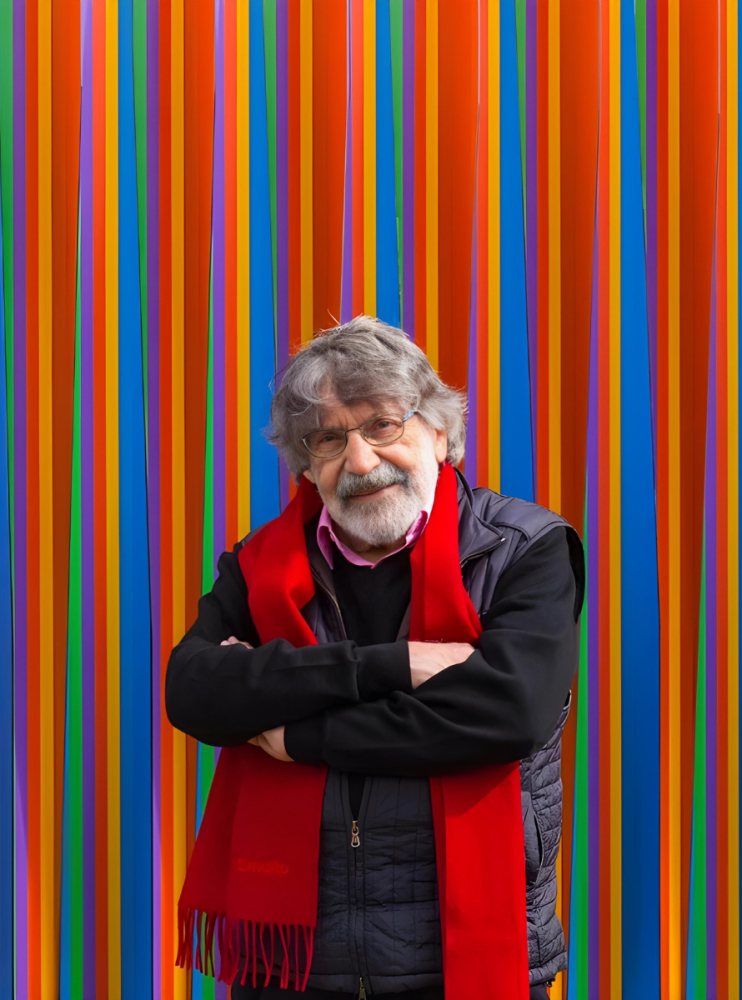
Carlos Cruz-Diez (Caracas, Venezuela, 1923 - Paris, France, 2019)
Carlos Cruz-Diez was one of the most prominent figures of Kinetic art whose work has been based upon the revaluation of color as an experience in itself, as a phenomenon of light in which interpretation or cultural background is no longer relevant. Part of this research comes from photography. His artistic practice invites viewers to become conscious of how perceptual relationships constitute the aesthetic, and how every context implies a different approach and construction of the same artwork.
His research has positioned him as one of the key thinkers of the 20th century when it comes to color. He has contributed majorly to the possibility of rethinking the relations between artist, spectator, and art, framing them within a participative process rooted exclusively in the use of color. In 1959 Cruz-Diez began his series Physichromie, through which he realized the idea of chromatic autonomy and its impact upon the viewer’s environment; one of the results was an important body of work that in later decades surpassed the limits of painting and explored the transformation of diverse spaces through the manipulation of color.
His work emphasizes participation and interaction, spatial perception, and movement as the key elements of the artistic experience.
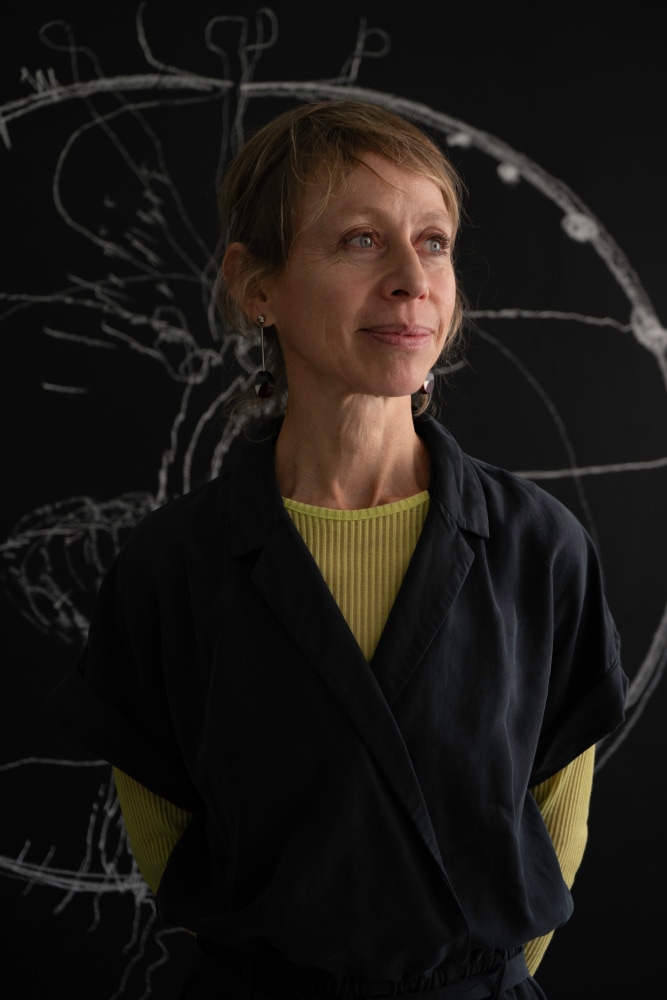
Galia Eibenschutz (Mexico City, Mexico,1970)
Multidisciplinary artist, she develops her work between the performing and visual arts. She explores themes such as the registration of movement and the passage of time, and the scenic presence of the body and its projection in architecture. She studied Visual Arts at the Universidad Nacional Autónoma de México's Escuela Nacional de Artes Plásticas and a MFA from DasArts in Amsterdam.
The artist's drawing and movement laboratory -presented at numerous universities and art spaces in Mexico and the United States- is a fundamental part of her practice. She has exhibited work at Mexican venues such as Arte Abierto, Casa Wabi, the Hospicio Cabañas, the Museo de Arte Carrillo Gil, the Museo Jumex, the Museo Tamayo, the Museo Universitario del Chopo, Laboratorio Arte Alameda, Sala de Arte Público Siqueiros and Teatro de la Danza.
She has also collaborated with international spaces such as Assembly (New York), Center for the Arts and Communication (Art Basel, Miami), Stedelijk Museum voor Actuele Kunst (SMAK, Amsterdam), The Cedar Cultural Center (Minneapolis) and YYZ (Toronto), among others. She was selected as a choreographer by the Mcknight Foundation (2019) and as a commissioned artist for the 15 Bienal FEMSA (2024).
She is currently a member of the Sistema Nacional de Creadores de Arte de México.
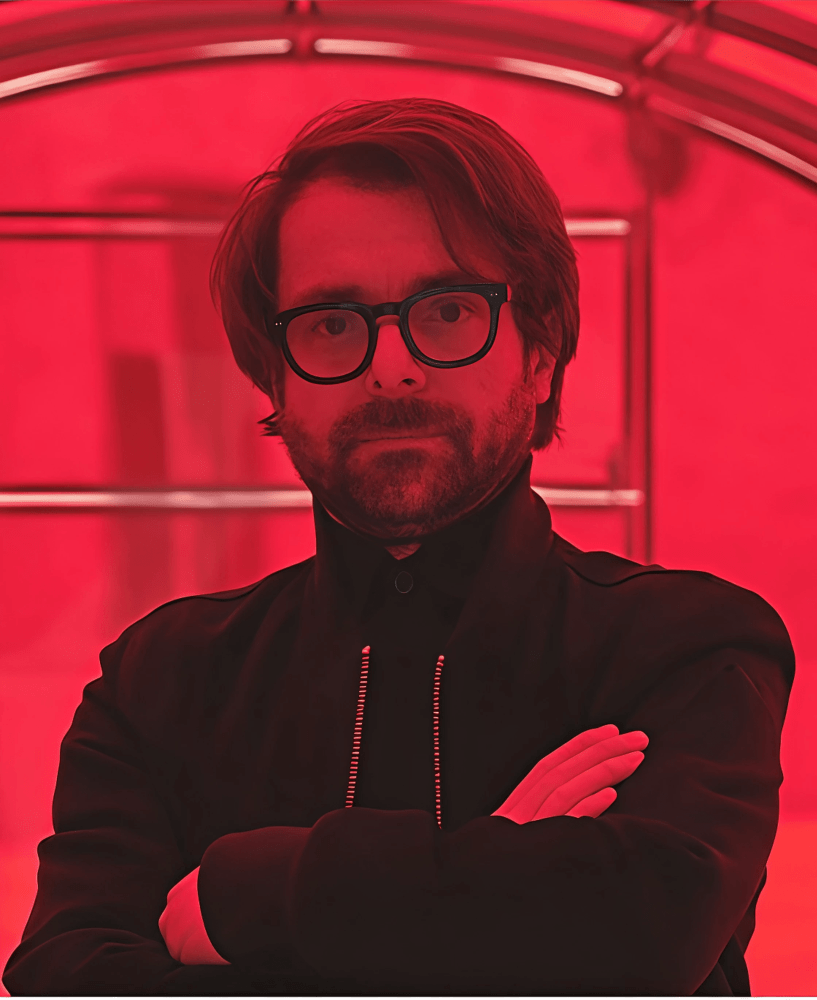
Patrick Hamilton (Lovaina, Belgium, 1974)
Patrick Hamilton studied art at the Universidad de Chile. His work is characterized by a political interest that promotes the return of the social burden that abstractionism and conceptual art had at their time. With clear references to the 20th-century avant-gardes, the artist develops critiques in which the economy of visual language allows him to be incisive and forceful with his ideas.
The works belonging to his series Abrasive Paintings, for instance, are made with black, red, yellow or white-colored sandpaper, with which the artist makes geometric patterns, almost always rectangular, alluding to bricks. A design that first appears innocuous hides an aggressive materiality, in a way that contrasts the “coldness” and simplicity of rational design with a strong emotional base. More widely, Hamilton seeks to make connections between these sorts of clashes and the contexts of the countries to which he holds personal links, be that Spain or Chile, referring to their social problems and their historical roots.

Jeppe Hein (Copenhagen, Denmark, 1974)
Jeppe Hein studied at the Royal Danish Academy of Arts in Copenhagen and the Städelschule in Frankfurt. Hein is widely known for his production of experiential and interactive artworks that can be positioned between the junction of art, architecture, and technical inventions.
Unique in their formal simplicity and notable for their frequent use of humor, his works engage in a lively dialogue with the traditions of Minimalist sculpture and Conceptual art of the seventies. Hein’s pieces often feature surprising and captivating elements that place spectators at the center of events and focus their experience and perception on the surrounding space. The influence of Conceptual art movements on Hein’s work can be seen in projects such as One Wish for You (2020), where he created balloons that looked like they were made of plastic and inflated by helium but were actually made with fiberglass, chrome lacquer and a magnet that holds them to the ceiling.
The material ambiguity of the piece lies in the naturalness with which the balloon moves against the most subtle breeze and the technical process behind it, something that allows Hein to show how our understanding and perception of daily objects are more in a subjective assessment than in their materiality itself. At the same time, the distortion of space that can be seen on the surface of the balloons reaffirms the idea that our gaze is under constant transformation.
He currently lives and works in Berlin, Germany.

Julio Le Parc (Mendoza, Argentina, 1928)
Julio Le Parc is one of the most renowned figures in the field of research, and experimental visual arts focused on modern Op-Art, whose influence spans from the mid-20th century to the present. He studied at the Universidad Nacional de las Artes in Argentina, where he was first interested in the relationships between light and form. Immersed in the radical environment of the student movements of his native country, between 1955 and 1958, he participated in the occupations of the Academy of Fine Arts and the reformulation of its programs, oriented by the proposals of avant-garde artists such as the Arte Concreto-Invención movement and where he met the influential art critic Jorge Romero Brest.
In 1958 he traveled to Paris after receiving a scholarship from the French Cultural Service, where he met artists such as Victor Vasarely and other important representatives of Kinetic art. From them, Le Parc extracted not only its formal proposals regarding movement but also its political implications to articulate aesthetic experiences without the need for previous knowledge or any sort of familiarity with the art world. Such implications derived into collective practices of the Groupe de Recherche d’Art Visuel (GRAV), of which he was a founding member, guided by a rejection of the position of art in capitalism. The collective emphasized anonymity and the participation of spectators through the application of industrial, mechanical, and kinetic techniques alike.
Afterwards, he participated in the Atelier Populaire during May 68 in France, as well as in various avant-garde radical publications, anchoring his production – always close to Kinetism – in a social and political commitment that conceives spectators no longer as participants in the work, but as co-authors of it.
Currently lives and works in Paris, France.
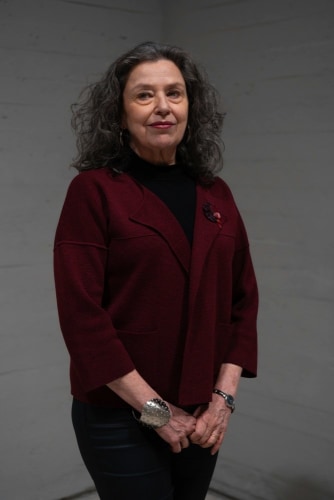
Magali Lara (Mexico City, Mexico, 1956)
Magali Lara is considered a central figure of feminist postmodern art in Mexico. She has a degree in Visual Arts for Plastic Expression from the Universidad de Guadalajara and a Master of Arts from the Universidad Autónoma del Estado de Morelos. With more than 40 years of artistic practice based on collaborations with poets and performers, Lara has developed a multidisciplinary practice that explores issues related to the unconscious, everyday life, emotions, the body, the feminine, and the “otherness”.
Influenced by women painters of the Mexican school such as María Izquierdo, Olga Costa, and Frida Kahlo, Lara takes up an interest in still life, objects, and dreamlike atmospheres. These elements are used to compose a unique symbolic language that she has brought to the fields of animation, drawing, writing, ceramics, the artist’s book, painting, and textiles. Mainly associated with Conceptual art, Magali Lara has been constantly working on a “poetics” that delves into the body, intimacy, desire, motherhood, childhood, sexuality, and everyday life; all this from a perspective of subjectivity. Starting from the ordinary and the visceral of the human body allows her to make a philosophical review of the human condition, something that the artist considers essential in the social function of art.
Since the nineties, she has worked at the Facultad de Artes de la Universidad Autónoma de Morelos. She currently forms part of the Academic Committee of the Master’s Program in Artistic Production and regularly serves as a juror for biennials and academic programs. She is a member of the Sistema Nacional de Creadores FONCA, which she accessed for the seventh time in the 2020-2023 period. In 2019 she received the Medal of Merit in Arts from Mexico City’s Congress and in 2024 she was awarded the Medal of Fine Arts by the Instituto Nacional de Bellas Artes y Literatura in Mexico.
She currently lives and works in Cuernavaca, Mexico.
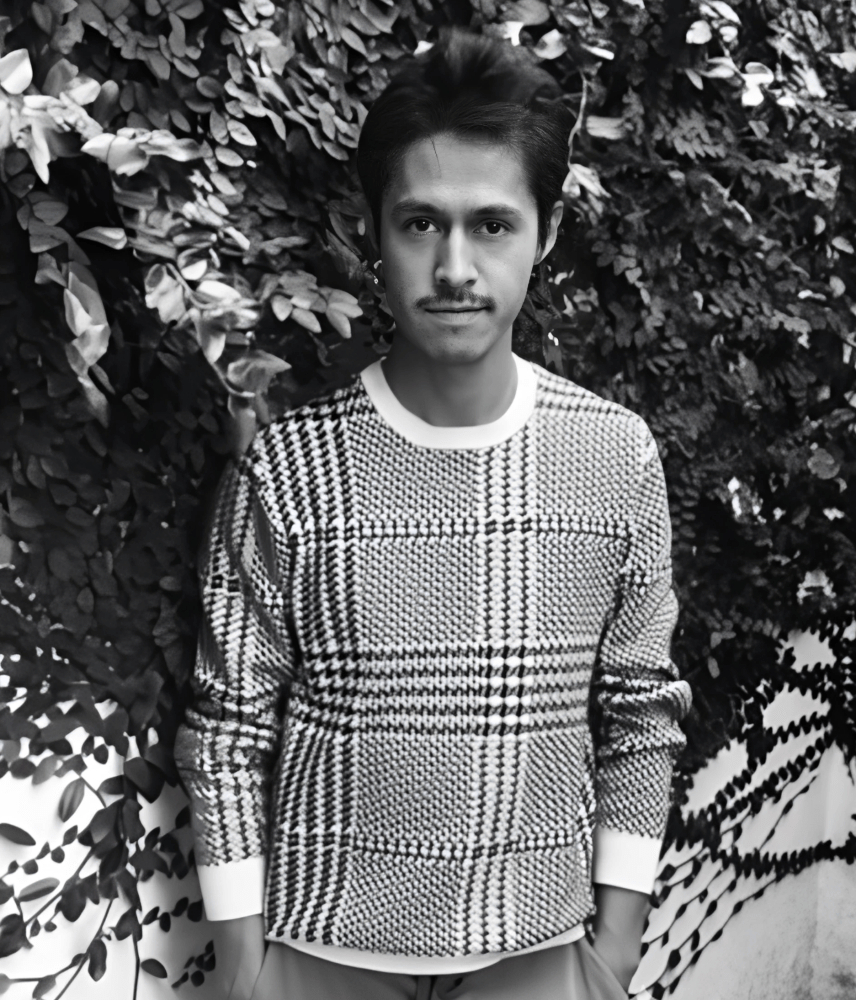
Francisco Muñoz (Tlaxcala, Mexico, 1986)
Francisco Muñoz’s multidisciplinary practice includes ceramic, drawing, collage, painting, textiles, and installations. He studied at the Escuela Nacional de Pintura, Escultura y Grabado, La Esmeralda, in Mexico City, and later at the École nationale supérieure des beaux-arts in Lyon, as part of an artistic fellowship program. His work is placed in the questioning and analysis of national identities, especially in aesthetic terms. The artist is originally from Tlaxcala, a crucial place in the imaginary produced by the official history of Mexico regarding the period of the Conquest. In that sense, Muñoz approaches pre-Columbian images and symbols as a part of present-day speeches that are necessary to question and explore.
One of the main axes of his work is the relationship that objects have with different contexts and how their meanings can be reordered through material modifications, conceptual associations, or painting interventions. The possibilities represented by the adaptation of objects to different environments are key to Muñoz’s practice: the identity of each piece is based on multiplicity, on the encounter between its “original” meanings and those it assimilates, both in the process of artistic work and at the point of encounter with its viewers. This syncretism directly connects the conceptual with the material, a line on which his work unfolds. Muñoz's work can be found in the Alain Servais Collection (Belgium) and in various private collections in Mexico.
He currently lives and works in Mexico City.
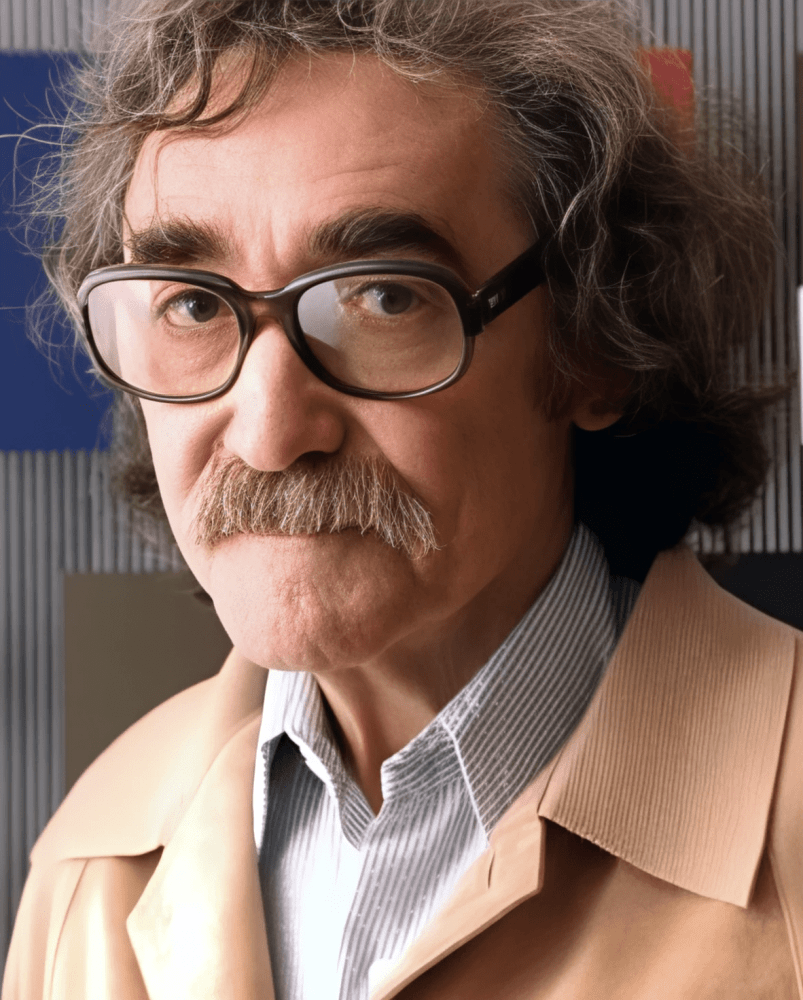
Jesús Rafael Soto (Ciudad Bolívar, Venezuela, 1923 - Paris, France, 2005)
Jesús Rafael Soto was an influential and central figure of post-war global modernism. He participated in the group exhibition Le mouvement (1955), at the Denise René Gallery in Paris, one of the foundational moments of the style. Throughout his career, he was prominent for the redefinition of the social role of art, rooted in wide research about the spatial-temporal quality of the artistic object.
Soto studied Fine Arts in Caracas, then he moved to Paris in 1950, where he became a part of the international group of artists that sought to renew the experimental art scene. Even though he has been commonly associated with Op Art, Soto’s work is rather characterized by the continuous study of movement and the dematerialization of the form, producing kinetic constructions where the active participation of the viewer is fundamental.
In 1958 he began Vibraciones, a series consisting of the overlap, in various levels, of grids and mobile objects that create infinite possibilities of vibrations and variations. Soto managed to create works accessible to all people, without marking the differences of age or cultural capital of the public, appealing to the very experience of the viewer in relation to the artistic object.